#Charles Durston
Explore tagged Tumblr posts
Text
On This Day in 1893 - Morphine murderer Carlyle Harris, his last mile and his last laugh.
On This Day in 1893 – Morphine murderer Carlyle Harris, his last mile and his last laugh.
The 1890’s spawned both the electric chair and a rash of murder by morphine. Unlike today morphine was far more easily obtained and, with forensic science still evolving, far harder to detect. Carlyle Harris and Robert Buchanan, a medical student and doctor respectively, are prime examples. They are forever linked by morphine, murder, the electric chair and their unwilling contributions to…
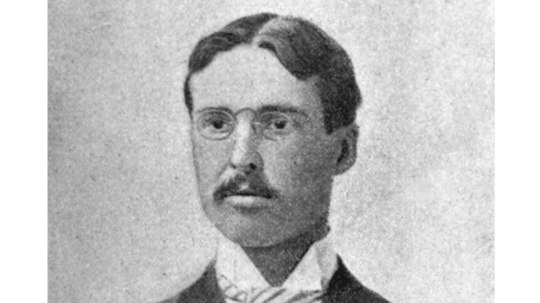
View On WordPress
#Anna Sutherland#Annie Buchanan#Auburn Prison#Canada#Canadian#Carl Feigenbaum#Carly;e Harris#Charles Durston#clemency#Comstock Finishing School#Dannemora#Doctor Allan Hamilton#Edwin Davis#electric chair#executed#forensics#Francis Wellman#Harry Carleton#Helen Potts#Levi Morton#morphine#murder#New York#New York City#Nova Scotia#Omar Sage#poisoner#Robert Buchanan#Roswell Flower#Rudolph Witthaus
1 note
·
View note
Photo
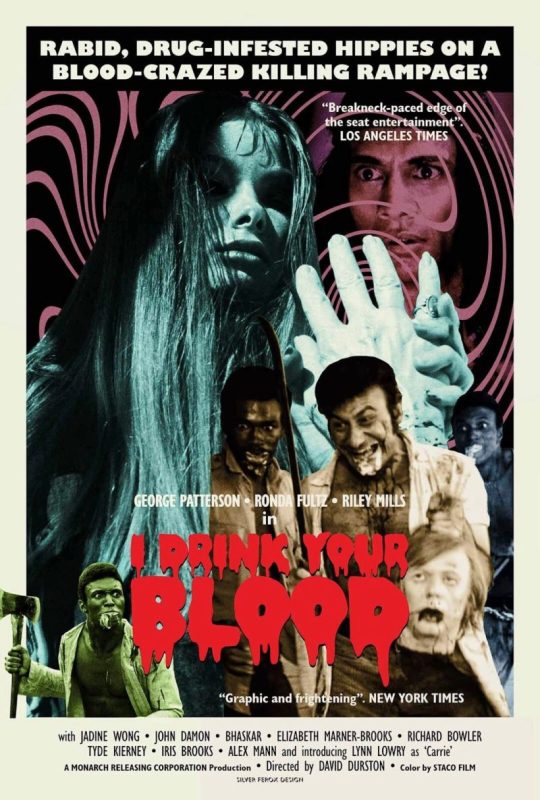
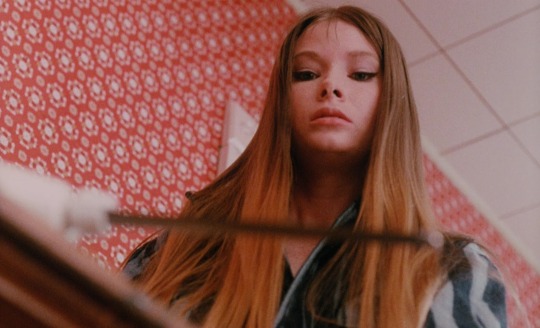
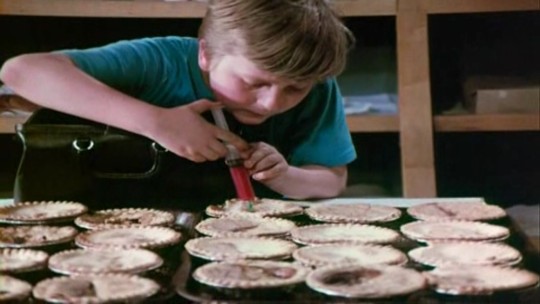
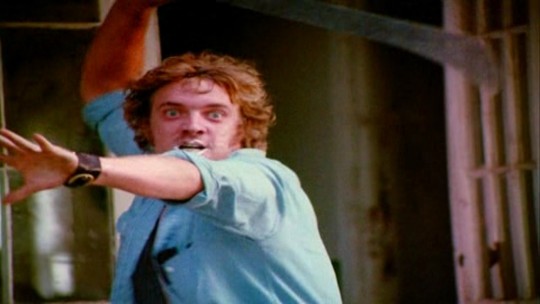
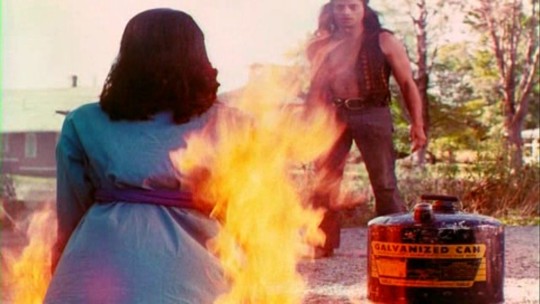
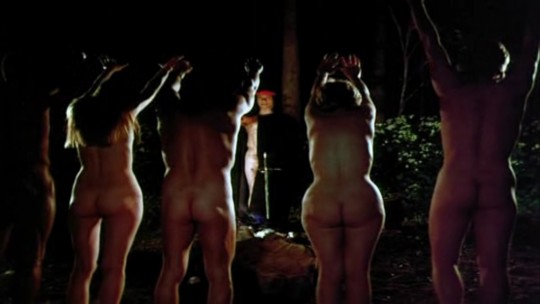
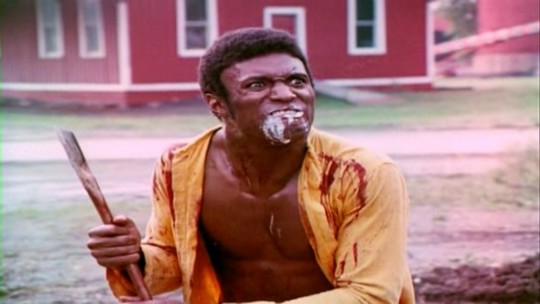
I Drink Your Blood (1971) full review
Published by grimoireofhorror.com 13/01/21
B-movies have become a staple in popular culture over the recent years, with cult classics from the 1970s and 1980s finally receiving the wider attention they rightly deserve. One such classic piece of media that has garnered attention is I Drink Your Blood.
I Drink Your Blood (1971) is an exploitation film directed by David Durston, who has only directed a total of 7 films from 1964 to 1978, including Stigma (1972) and produced by Jerry Gross, who has work on a number of well-known films such as Zombie Flesh Eaters (1979) (or Zombi 2, depending on where you are from).
*This review contains spoilers
The film opens to Horace, the leader of a roaming cult of satanic hippies, performing an occult ritual in the woods outside of a small town, when a young girl, Sylvia, is noticed observing the group, but Andy, a young man, who she had caught stealing a chicken in the afternoon and befriended, tries to defend her. The rest of the group give chase and attack her, beating her mercilessly. After managing to make her way back into town the next morning, she is found traumatized by her younger brother, Pete, and Mildred, the towns baker, who take her home to her grandfather, the local vet.
After their van breaks down, the cult has no choice but to make their way into town for supplies. They buy food from Mildred, who is unaware of what has transpired, who lets them know that the town is scheduled for demolition and they can stay in a vacated house for the night.
After Sylvia overcomes her state of shock, she tells her grandfather what has happened and he confronts the cult, only to be beaten and force-fed LSD. As Horace is about to kill the old man, the cult members convince him to stop as Pete arrives outside, demanding to know what is going on. Angered by what the cult did to his family, Pete hatches a plan of revenge by obtaining tainted blood from a rabid dog to lace food to sell to the cult.
After eating the contaminated food, except for Andy, who refuses to eat, the cult starts to show signs of infection and exhibit violent behaviour, causing some of them to flee into the night. One member of the group is picked up by construction workers from the local dam, who take her back to their lodgings to calm down, she proceeds to have sex with a few of the workers and infect them. Roger, head of site construction and Mildred’s boyfriend, discovers his workforce are now all infected with rabies and is chased, along with the local doctor, down to a lake filled quarry but their assailants are scared away by the water that has collected.
The remaining members of the cult attack each other in what remains of the town whilst Pete, Sylvia and Andy, who has expressed regret for what had happened to Sylvia, try to find a means of escape. The group find Mildred hidden inside the bakery, but as they are let inside, Andy is attacked and killed by a rabid construction worker and the store is breached but Mildred manages to kill one as they escape outside to her car. Surrounded by Rabid workers and cultists, the car is flipped over and all looks lost until a group of armed police, led by Robert, gun down the remaining infected and save the trio from harm.
The film was originally title Phobia but was changed after production to be more fitting for a double feature and renamed I Drink Your Blood to be paired with I Eat Your Skin, a film that went by the name Zombie and was shelfed for 6 years before Jerry Gross obtained the rights to release the film under this double feature.
The film was the first to receive an X rating for violence alone and was re-edited and scenes reshot to receive a M rating and a cinema release. It is rumoured that David Durston based the character of the cult leader, Horace, on actual cult leader Charles Manson, who was made famous for ordering his cult to go on a killing spree in 1960’s California. With the film being marketed and released a year after Manson’s conviction, Jerry Gross wanted to cash in on the public’s fascination and disgust with the case. In 2009, David announced that he planned to remake the film, which he had started work on the films script, unfortunately, David’s death in 2010 has causes the project to be permanently shelved.
The cinematography is fairly competent but has many scenes where crew members are visible making them feel somewhat rushed in production. The use of its soundtrack adds both tension and unintended comedy to certain scenes, composed by Clay Pitts, the synth heavy soundtrack being atmospheric and unsettling in some scenes but becomes hilarious during chase scenes. The practical special effects are very well done for such a small budget and hold up 50 years later, with great blood work and realistic props, it’s one of the films core strengths. I’m not going to lie; this film was never going to win any awards. With a fine mix of over and under acting by the cast of relatively unknown actors, a campy exploitation story and unique 70’s soundtrack, this film falls perfectly into the category of “so bad its good”, and my is it good.
Despite all this, the film has positive to mixed reviews from critics and is a beloved cult classic, having similar characteristics to later classics as David Cronenberg’s Rabid (1977) and George A Romero’s The Crazies (1973) and has been shown at frequently at film festivals over the years, helping cement its place in popular culture.
#writing#writers on tumblr#journalsim#journal#review#exploitation#film#b movies#i drink your blood#gore#zombies#the banshee#grimoire of horror
9 notes
·
View notes
Text
ONCE UPON A TIME AT THE DRIVE-IN: The Testament of Al Adamson

It was 50 years ago last year that the cheap and peculiarly patchwork films of Al Adamson first began to assert themselves on drive-in and grindhouse screens across America. Initially recognized for his horror films (Blood of Dracula’s Castle, Horror of the Blood Monsters, Brain of Blood, and especially Dracula vs. Frankenstein), he went on to add biker, action, blaxploitation, sexploitation, and even family fare to his rickety roster before retiring from his director’s chair sometime in the 1980s and vanishing into private life. The rise of Adamson’s unpretentious output happened to coincide with the decline of the Hollywood studio system as well as such old guard avatars as American International Pictures, Britain’s Hammer Films and Amicus Productions, whose imprints always guaranteed a certain level of production value and class. Adamson’s work was something of a throwback to the gore films of Herschell Gordon Lewis (Blood Feast, Two Thousand Maniacs!), but whereas Lewis’ work in horror was a taboo-breaking branching-out from his earlier nudie-cutie fare, Adamson’s pictures were endearing for their sentimental casting of veteran character actors well past their prime; technically, they didn’t bear comparing even to the old Monogram or PRC titles where Bela Lugosi was often found slumming during the 1940s, but the average drive-in patron could look at them and think, after his third or fourth beer of the night, “Damn, I could do better than this!” And sure enough, Adamson’s rough-and-ready example and his impressive earnings played a part in encouraging the powderkeg of DIY horror breakthroughs that went epidemic around the turn of the decade. Just to name the Americans, these feral young newcomers included George A. Romero, Wes Craven, Tobe Hooper, Bob Kelljan, David Durston, Andy Milligan, S.F. Brownrigg, even Oliver Stone, not to mention the many young and international filmmakers associated with Roger Corman’s New World Pictures.
1969’s Golden Anniversary honors were largely drawn to Quentin Tarantino’s behind-the-scenes movie fantasy Once Upon a Time... In Hollywood, which was much praised for its magical extrication of the beautiful and talented actress Sharon Tate from her hideous murder on August 9th of that year. For some of us, Once Upon a Time... In Hollywood links directly to thoughts of Al Adamson; in early 1969, he shot parts of his biker thriller Satan’s Sadists at the notorious Spahn Movie Ranch in Los Angeles’ Ventura County, where thwarted songwriter Charles Manson lived with his “family” members, inculcating in them a blood-lusting resentment for the established Hollywood order that would not invite him in. When Satan’s Sadists was first released in June 1969 (its trailer promising “A Rebellion of Human Garbage!” led by West Side Story star Russ Tamblyn), it quickly disappeared… but in the wake of the Tate/La Bianca murders just a few months later, its distributor Independent-International shipped it back out with a new, sleazier publicity campaign that actually emphasized its prophetic Manson Family associations. “See the Shocking Story Behind the Headlines… Wild Hippies on a Murder Spree!,” crowed the ads; “Actually Filmed Where the Tate Suspects Lived Their Wild Experiences!”And just in case this wasn’t enough, the film was frequently co-billed with Tate’s 1968 British film Eye of the Devil, now being sold with the tagline “Weird, mystic cult slaughters innocent victims!”
As irony would have it, almost thirty years after so grossly pandering to the public’s prurient interest in the murder, the director of Satan’s Sadists got the biggest headlines of his career when Al Adamson was named as the murder victim in a crime story nationally broken in August 1995, a couple of months after his mysterious disappearance.
This story is now the subject matter of a feature-length documentary by filmmaker David Gregory: Blood and Flesh: The Reel Life and Ghastly Death of Al Adamson, which premiered late last year at the Fantasia International Film Festival in Montreal and at the UK Fright Fest.
The son of 1930s western star Denver Dixon (in truth, transplanted New Zealand native Victor Adamson), Al had been kicking around the exploitation film business his entire life. In 1960, working under the alias “Lyle Felice”, he took the lead role in a Western entitled Halfway To Hell, which he ended up co-directing with his father. The film was never released and the young Adamson wasn’t able to put another film together until 1965, when he wore all the various hats needed to make his first official feature Echo of Terror, a jewel heist programmer somehow given the breath of life on a mere $2,000 investment.
Low on thrills and boasting no stars, Echo of Terror followed in the footsteps of Halfway To Hell by never finding a distributor. It remained on the shelf until Adamson made the fateful acquaintance of Samuel M. Sherman, then working in the publicity department at Hemisphere Pictures, designing campaigns for the likes of Filipino imports like Eddie Romero’s war drama The Ravagers and Gerardo de Leon’s vampire opus The Blood Drinkers. Sherman had just finished a two-year stint as the editor of the Warren Publications magazine Screen Thrills Illustrated, devoted to the movie serials of the 1930s and ‘40s – so he was familiar with the name Denver Dixon and formed a fast friendship with his son. He screened Edge of Terror and, while agreeing it was unviable in its present shape, he was impressed by what Adamson had accomplished with so little money. They didn’t yet have the means to produce an entirely new picture, so they made a reel’s worth of changes to what they had, and that’s how Echo of Terror – with a modicum of new footage featuring some go-go dancers - became Psycho A Go Go.
Through Hemisphere, this jarring concoction was shipped out in support of The Ravagers in Rochester, New York at the end of 1965, and it remained in circulation in New England and Midwestern states through 1967, first playing with another Gerardo de Leon picture, Curse of the Vampires (retitled Blood Creatures) and later appearing at the bottom of triple – and even quadruple - bills with Hammer’s Dracula Prince of Darkness (1965) and Plague of the Zombies (1966).
Even as Psycho A Go Go was tempting sullen motorists to stick around for the free donuts and coffee being served to anyone who lasted till the fourth feature, Sherman and Adamson could see that the clock was ticking against the timeliness of its title. So yet another scheme was hatched to squeeze maximum earnings out of a minimal further investment. Sherman knew more about the film business than Adamson did, so it was likely he who suggested they write some additional mad scientist gobbledegook, hire John Carradine for a day or two, and ship out their brand new picture with a more exploitable title like Fiend With the Electronic Brain – pretty much exactly what producer Jerry Warren had done some years earlier with the reels of unmarketable Swedish and Chilean footage that he sold to unsuspecting patrons as Invasion of the Animal People (1959) and Curse of the Stone Hand (1965), starring John Carradine!
They followed through on the plan and did indeed secure a distribution deal (or at least an arrangement) with David L. Hewitt’s American General Pictures, who got Fiend With the Electronic Brain into a couple of drive-ins in Corpus Christie and Austin, Texas in late 1967 and early 1968 as a co-feature to Jack Hill’s as-yet-unrecognized classic Spider Baby. On the books, it gave them credit for having produced and released a new picture that year, which made their new partnership the beneficiary of a much-needed tax break and a foundation from which they were able to produce their first real joint effort. This was Blood of Dracula’s Castle (1969, also starring Carradine), made in partnership with Paragon International Pictures, as was its co-feature, Bud Townsend’s Nightmare In Wax starring Cameron Mitchell. Released through Crown International, the double bill premiered in May 1969 and Blood of Dracula’s Castle in particular was never out of theatrical circulation for the next two years.
You might think they would have moved on to more important things, but the Frankensteinian efforts to make a bigger, better Fiend With the Electronic Brain continued to occupy Sherman and Adamson. Sherman’s success with Blood-titled campaigns – ranging from 1970s Mad Doctor of Blood Island to 1971’s Frankenstein’s Bloody Terror – had convinced him that “Blood” was the most commercially vital word in horror terminology. His theory was subsequently bourne out by the success of his 1972 “Chiller Carnival of Blood” – a drive-in festival composed of old, decomposing Hemisphere titles (1959’s Terror Is A Man retitled Blood Creature, Mad Doctor of Blood Island retitled Blood Doctor, Theater of Death retitled Blood Fiend, and Brides of Blood retitled Blood Brides). Sherman’s “good luck noun” was prominently applied to their old warhorse the next time it surfaced, this time with new footage featuring Kent Taylor and Adamson’s wife Regina Carroll, who had become a fixture of his work since Satan’s Sadists. The rechristened Blood of Ghastly Horror actually headed drive-in triple bills upon its release in January 1973 – and some ticket buyers may have been understandably annoyed to discover that it was the same film that had been playing on television stations across the country as early as April 1972 under the title Man With the Synthetic Brain.
This is but one of numerous stories of patchwork reinventions and retitlings attending the filmography of Al Adamson, which will receive the fullest possible examination when Severin Films releases the mind-staggering tributary box set Al Adamson – The Masterpiece Collection, on April 21st. Compiling all 32 of Adamson’s surviving feature films and variants on 14 Blu-ray discs (all Region A, except for Discs 1, 12, and 14, which are region free), a 128-page book, as well as the David Gregory documentary, this Matterhorn of home video retrospectives will be limited to only 2,000 copies and supply is dwindling fast. The dwindling is faster still for two variants packed with additional incentives: you’ve already missed the “Bundle of Ghastly Horror” (limited to 200 copies and containing posters signed by Adamson stars John “Bud” Cardos and Zandor Vorkov), but the limited 300-copy “Bundle A Go Go” retains most of the contents - a T-shirt, dimestore vampire fangs, 7” soundtrack single of music from The Female Bunch, and Adamson patch and enamel pin - while substituting a signed postcard for the posters. Pick your poison at severin-films.com.
If you’re wondering, “Do I need this?,” only you can answer that question reliably. However, should you be open to further temptation, I can whole-heartedly recommend the documentary Blood and Flesh: The Reel Life and Ghastly Death of Al Adamson, which is available for purchase separately and now streaming on such outlets as Amazon Prime, Vudu, and Google Play.
by Tim Lucas
7 notes
·
View notes
Text
Quentin Tarantino prepara filme sobre Charles Manson
New Post has been published on http://baixafilmestorrent.com/cinema/quentin-tarantino-prepara-filme-sobre-charles-manson/
Quentin Tarantino prepara filme sobre Charles Manson
Quentin Tarantino anunciou que só irá dirigir mais dois filmes antes de se aposentar. Segundo informações do The Hollywood Reporter, o próximo longa do cineasta será sobre Charles Manson e seu grupo de seguidores. Pela primeira vez Tarantino se afasta dos filmes de gênero para trabalhar em cima de uma história real que envolve o assassinato da atriz Sharon Tate. O projeto está em fase pré-produção e enquanto Quentin Tarantino faz os ajustes finais no roteiro o processo de escolha de elenco já começou. Brad Pitt e Jennifer Lawrence estariam negociando para participar do filme. Há alguns anos atrás Tarantino declarou que o mundo não estava pronto para o seu filme de serial killer.
Embora Charles Manson só tenha matado uma pessoa ele foi o mandante de oito mortes. A história de Manson, que desde 1969 cumpre a pena de prisão perpétua nos EUA, já foi tema de livros, filmes, documentários e séries. Em 1967, após cumprir sete anos de pena em um presídio da Califórnia, Charles Manson (32) recebeu permissão para se mudar para San Francisco, a capital do movimento hippie. No mesmo ano Manson reuniu alguns jovens em um ônibus escolar e pegou a estrada ao som do disco Magic Mistery Tour, dos Beatles. Essa seria a centelha inicial do grupo que mais tarde se chamaria de Família Manson.
Em 1968, os Beatles lançam o álbum The White Album que contém a música Helter Skelter. Charles Manson se baseou em letras como essa da banda, além de passagens da Bíblia para fazer uma profecia para a Família Manson: uma guerra racial de proporções inimagináveis está prestes a começar e os assassinatos que eles iriam cometer fazem parte de um plano maior. As mortes funcionariam como um gatilho para que o processo do Helter Skelter acontecesse. Helter Skelter era o termo usado por Manson para descrever uma apocalíptica guerra racial (via Beatles Bible):
Vejam as músicas dos Beatles, canções que são cantadas no mundo inteiro pelos jovens, não tem nada de novidade, está tudo escrito no livro do Apocalipse de São João. Tem tudo a ver com os quatro anjos programando o holocausto, os quatro anjos procurando pelo quinto anjo para liderar as pessoas até o abismo de fogo, ao Vale da Morte (Death Valley é o deserto em que a família acampava). Tudo está em preto e branco, no The White Album diz branco, não tem como confundir essa cor.
Porém, antes dos crimes, em 1967, Charles Manson e o grupo conheceram Dennis Wilson dos Beach Boys, chegando até a morar um tempo em uma casa que era de sua propriedade. Charles Manson também era compositor e conseguiu que um amigo ligado ao meio musical pagasse para que suas músicas fossem gravadas no disco Lie: The Love and Terror Cult (1970). Os próprios integrantes dos Beach Boys, Dennis Wilson e Brian Wilson, conduziram anteriormente uma sessão de gravação com Manson.
Uma das canções de Charles teve a letra alterada e foi gravada pelos Beach Boys no EP Bluebirds Over the Mountain. A música recebeu o nome de Never Learn Not to Love e no registro apenas Dennis Wilson consta como compositor. Nos anos 1990, a banda Guns N’ Roses fez uma versão da música Look at Your Game, Girl para o seu disco de covers The Spaghetti Incident, mas outros artistas também gravaram músicas de Manson.
Charles Manson começou a agir após falar a profecia. Em janeiro de 1969, a Família Manson se muda do deserto para uma casa que Manson descobriu em Los Angeles. O grupo estava seguindo as ordens de Charles e o plano envolvia a gravação de outro disco que iria provocar o Helter Skelter. Porém, Terry Melcher, um amigo de Dennis Wilson e dono de uma gravadora, faltou a um encontro que havia marcado com a Família Manson. Charles Manson vai até a casa em que acreditava ser de Melcher, mas encontra Sharon Tate e seu marido Roman Polanski. Terry Melcher não era mais inquilino de Rudi Altobelli, o dono da propriedade. A Família Manson passou a viver em um rancho na Califórnia que era usado como locação para filmes de faroeste e Terry Melcher chegou a visitá-los para ouvi-los cantar.
No mês de junho, Charles Manson esteve envolvido na morte de Bernard Crowe, um homem negro envolvido com tráfico. Manson queria dinheiro e como não conseguiu acabou matando Bernand com um tiro em 1º de julho de 1969. No dia 25 do mesmo mês, Manson enviou três pessoas até a casa de Gary Hinman porque ele teria vendido drogas fracas para o grupo. Gary Hinman se recusou a devolver o dinheiro e o trio manteve ele como refém durante dois dias. Mais tarde, Charles Manson apareceu e cortou um pedaço da orelha do homem (parecido com a cena de Cães de Aluguel). Bobby Beausoleil, um dos invasores, esfaqueou Hinman até a morte. O toque final do crime foi dado por alguém que escreveu “Político Porco” com o seu sangue na parede e desenhou o símbolo dos Panteras Negras. No dia 06 de agosto, Bobby Beausoleil foi preso dirigindo o carro de Gary Hinman e a arma do crime foi encontrada dois dias depois. No rancho em que morava com seus seguidores Charles Manson avisava que havia chegado a hora do Helter Skelter.
Em 09 de agosto Charles Manson mandou Tex Watson e três mulheres entrarem no endereço em que Sharon Tate e Roman Polanski moravam. Cinco pessoas foram mortas incluindo a atriz Sharon Tate, que estava grávida de oito meses de Roman Polanski. O cineasta escapou apenas por estar em outra cidade. No dia seguinte, as vítimas foram o casal Leno e Rosemary LaBianca. Parte da Família Manson conseguiu invadir a casa deles e os assassinou. Nas duas noites de matança o sangue dos mortos continuou a ser usado para a escrita de mensagens nas paredes como as palavras: Porco e Helter Skelter (referências às músicas dos Beatles). Charles Manson e vinte e cinco pessoas foram presas suspeitas de roubo de carros no dia 16 de agosto. Os outros membros da “família” foram presos ao longo do ano de 1969, alguns no próprio rancho. Condenados a morte inicialmente, Charles e os integrantes da Família Manson receberam a prisão perpétua após uma mudança na lei que passou a proibir a pena de morte na Califórnia.
O filme I Drink Your Blood (1970), dirigido por David Durston, foi a primeira obra a se inspirar nos crimes da Família Manson. Em 1973, Robert Hendrickson e Laurence Merrick dirigiram o documentário Manson sobre Charles Manson e seus seguidores. O livro Helter Skelter, escrito por Curt Gentry e Vincent Bugliosi e publicado em 1974 , trouxe detalhes do caso uma vez que Bugliosi trabalhou como promotor no julgamento de Manson. Em 1976, foi ao ar Helter Skelter um filme para televisão baseado no livro. Trinta anos depois, em 2004, foi realizada uma refilmagem pelo diretor John Gray.
Em 1984, o cineasta John Aes-Nihil dirigiu o filme Manson Family Movies inspirado na lenda de que a Família Manson pode ter se filmado em algumas das suas façanhas. Este longa-metragem é uma recriação de como um filme deles pode ter sido. Filmado de forma fragmentada, Manson Family Movies é um falso filme caseiro dos eventos que culminaram nos infames assassinatos de Sharon Tate e do casal LaBianca.
Cinco anos depois estreou o documentário Charles Manson Superstar (1989), de Nikolas Schreck. No doc é possível ver e ouvir do próprio Manson como ele convenceu seus seguidores a se mudar para o deserto para treinar para o apocalipse, como liderou uma tripulação assassina através de uma série de mortes diabólicas e como ele criou um terror preconcebido baseado em sua filosofia de vida.
Muitas obras se dedicaram ao tema, vale ainda destacar os filmes The Manson Family (1997), com direção de Jim Van Bebber; Leslie, My Name is Evil (2009), dirigido por Reginald Harkema; Wolves at the Door (2016), com direção de John R. Leonetti e a série de TV Aquarius: Os Crimes de Charles Manson, criado por John McNamara que teve duas temporadas exibidas entre 2015 e 2016.
#Beach Boys#Beatles#Bluebirds Over the Mountain#Bobby Beausoleil#Brian Wilson#Charles Manson#Charles Manson Superstar#Dennis Wilson#Família Manson#Gary Hinman#Helter Skelter#I Drink Your Blood#Lie: The Love and Terror Cult#Look at your game girl#Manson Family Movies#Never Learn Not to Love#Quentin Tarantino#Roman Polanski#Terry Melcher#Tex Watson#The White Album
0 notes
Text

📙ANTHONY WELDON THE TROUBLE MAKER
ANTHONY WELDON STARTED THE LIE!!!!!!!! THAT KING JAMES WAS GAY/HOMOSEXUAL !!!
HIS PICTURE IS BELOW WITH THE REAL KING JAMES!!!!!
James’s Political Enemies
The charge that King James was a homosexual emanated from an old political enemy of the king, Sir Anthony Weldon, Clerk of the Green Cloth in the royal court. Moreover, his family for generations had provided officers for the royal household. However, Weldon was expelled from the court by James in about 1625 for political reasons. Weldon subsequently “swore he would have his day of vengeance.” Curiously, Weldon never confronted the king but waited twenty-five years later to hint that James had effeminate interest in men. Moreover, he also waited until James’s son, Charles I, had been executed in 1649. As we will note in the next section, Weldon not only came to hate James, but also had a racial hatred of the Scottish race from which James sprang.
Another enemy of James was one Guy Fawkes. Under the direction of Jesuit operatives, Fawkes even tried to bomb James and the entire English parliament with thirty-six barrels of gunpowder. There should be no question that James had both political and religious enemies.
QUESTION: I have been told that King James was a homosexual. Is this true?
ANSWER: NO........NO!!!!!!!!!!!!!!!!!!
WHY DID WELDON LIE? BECAUSE KING JAMES DID NOT KNIGHT HIM....
EXPLANATION: King James I of England, who authorized the translation of the now famous King James Bible, was considered by many to be one of the greatest, if not the greatest, monarchs that England has ever seen.
Through his wisdom and determination he united the warring tribes of Scotland into a unified nation, and then joined England and Scotland to form the foundation for what is now known as the British Empire.
At a time when only the churches of England possessed the Bible in English, King James' desire was that the common people should have the Bible in their native tongue. Thus, in 1603, King James called 54 of history's most learned men together to accomplish this great task. At a time when the leaders of the world wished to keep their subjects in spiritual ignorance, King James offered his subjects the greatest gift that he could give them. Their own copy of the Word of God in English.
James, who was fluent in Latin, Greek, and French, and schooled in Italian and Spanish even wrote a tract entitled "Counterblast to Tobacco",which was written to help thwart the use of tobacco in England
Such a man was sure to have enemies. One such man, ANTHONY WELDON, had to be excluded from the court. Weldon swore vengeance. It was not until 1650, TWENTY-FIVE YEARS after the death of James that Weldon saw his chance. He wrote a paper calling James a homosexual. Obviously, James, being dead, was in no condition to defend himself.
The report was largely ignored since there were still enough people alive who knew it wasn't true. In fact, it lay dormant for years, until recently when it was picked up by Christians who hoped that vilifying King James, would tarnish the Bible that bears his name so that Christians would turn away from God's book to a more "modern" translation.
It seems though, that Weldon's false account is being once again largely ignored by the majority of Christianity with the exception of those with an ulterior motive, such as its author had.
It might also be mentioned here that the Roman Catholic Church was so desperate to keep the true Bible out of the hands of the English people that it attempted to kill King James and all of Parliament in 1605.
In 1605 a Roman Catholic by the name of Guy Fawkes, under the direction of a Jesuit priest by the name of Henry Garnet, was found in the basement of Parliament with thirty-six barrels of gunpowder which he was to use to blow up King James and the entire Parliament. After killing the king, they planned on imprisoning his children, re-establishing England as a state loyal to the Pope and kill all who resisted. Needless to say, the perfect English Bible would have been one of the plot's victims. Fawkes and Garnet and eight other conspirators were caught and hanged.
It seems that those who work so hard to discredit the character of King James join an unholy lot.
James’s Enemies Discredited
Maurice Lee, Jr., a historian published by the University of Illinois Press, says, “Historians can and should ignore the venomous caricature of the king’s person and behavior drawn by Anthony Weldon.” Another historian, Christopher Durston, writes regarding Weldon’s book: “This poisonous piece of literary revenge was to do profound and lasting damage to James’s reputation, as it became the prime source for many subsequent historical assessments whose authors failed to make sufficient allowance for its obvious bias.”
There were several others who hinted that James was a homo-sexual. However, upon examination, in each case, they turn out to be avowed political enemies of James and likely fed upon each other’s gossip. Much could and has been written on this matter. However, Ste-phen Coston quotes a historian who lived much closer to these charges as “despicable and libelous, . . . full of lies, mistakes, and nonsense.”
0 notes